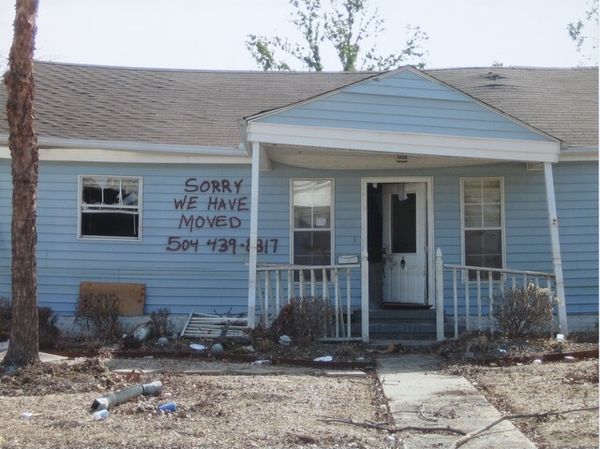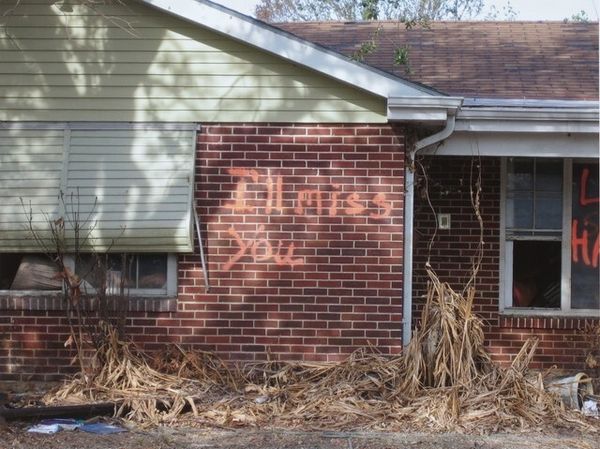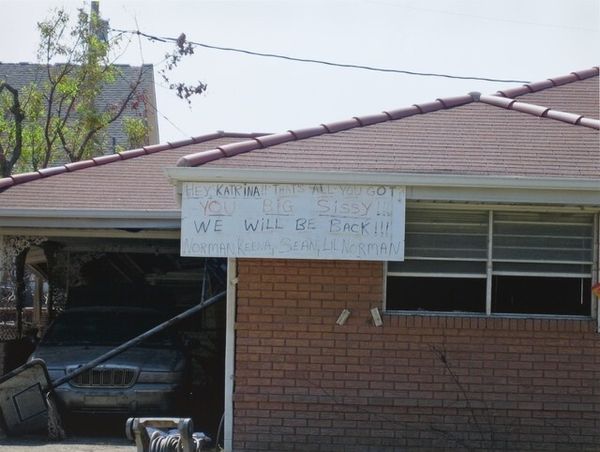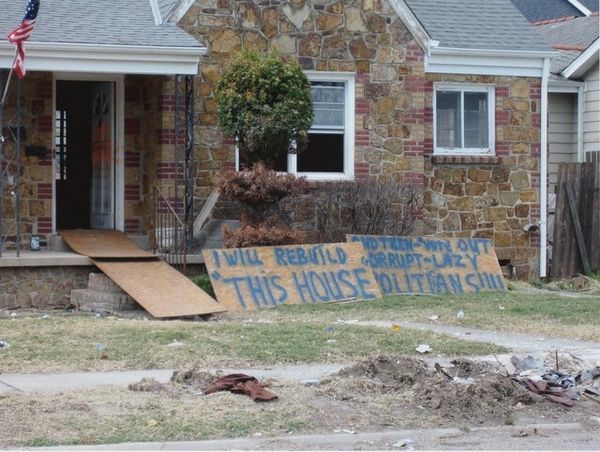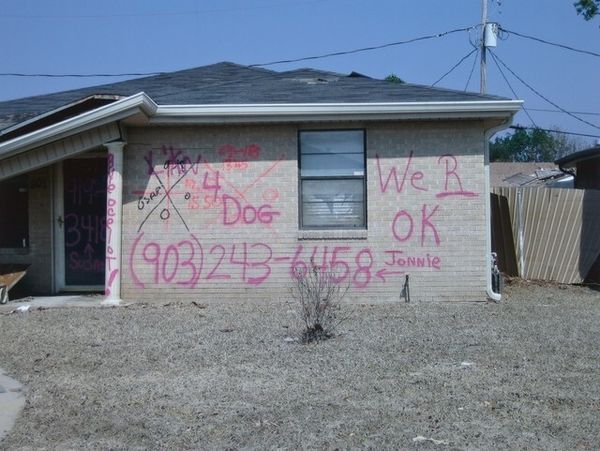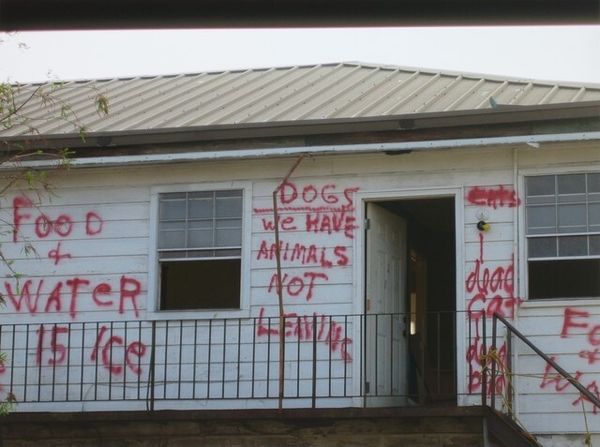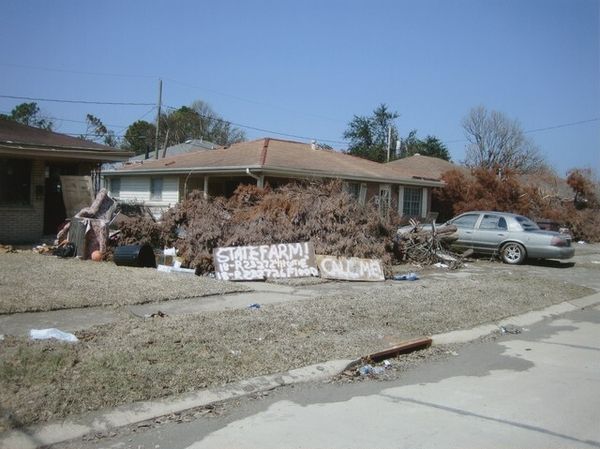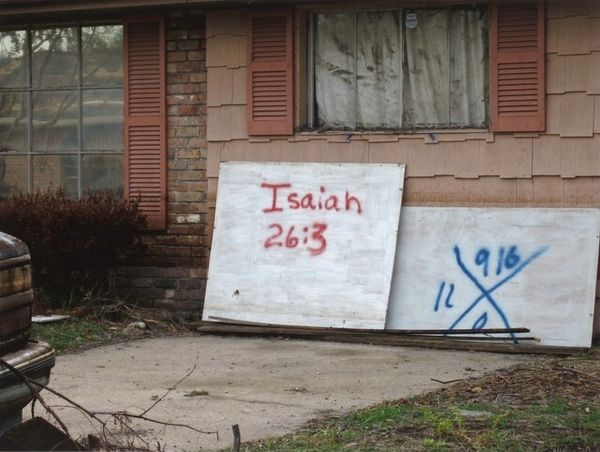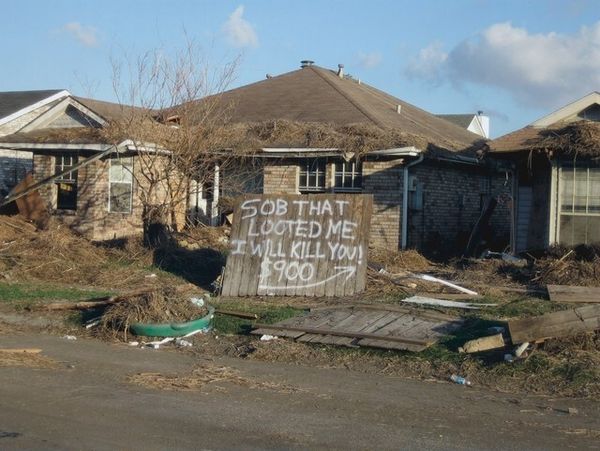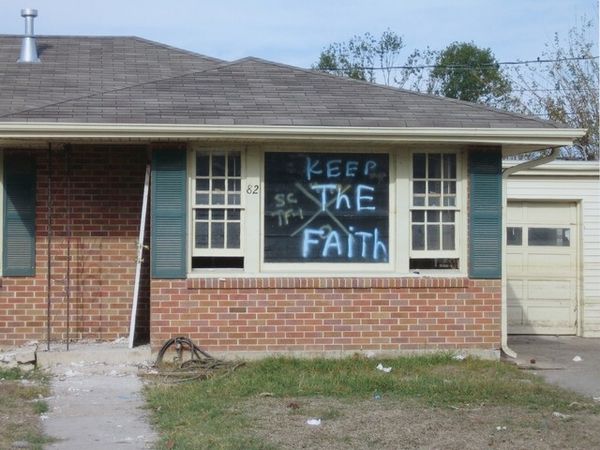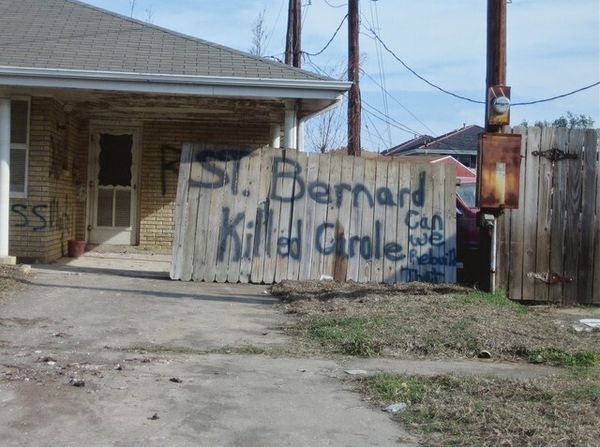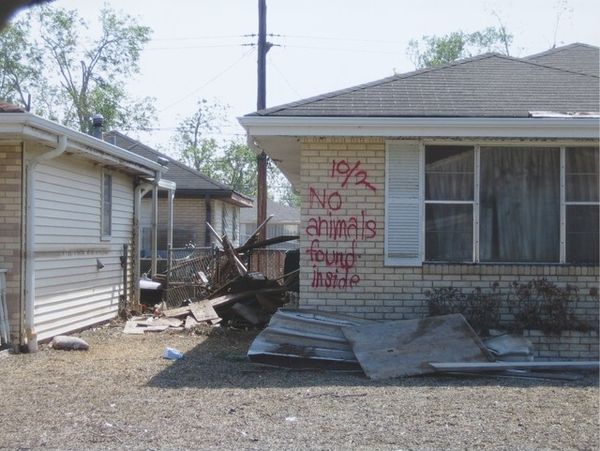![Untitled [New Orleans and the Gulf Coast, 2005] by Richard Misrach](/_next/image?url=https%3A%2F%2Fd2w8kbdekdi1gv.cloudfront.net%2FeyJidWNrZXQiOiAiYXJ0ZXJhLWltYWdlcy1idWNrZXQiLCAia2V5IjogImFydHdvcmtzL2I2YWUyMmRkLTE0NGQtNGEwNy1hYmUzLTNlMDQ4MDhjYWFiNy9iNmFlMjJkZC0xNDRkLTRhMDctYWJlMy0zZTA0ODA4Y2FhYjdfZnVsbC5qcGciLCAiZWRpdHMiOiB7InJlc2l6ZSI6IHsid2lkdGgiOiAxOTIwLCAiaGVpZ2h0IjogMTkyMCwgImZpdCI6ICJpbnNpZGUifX19&w=1920&q=75)
Untitled [New Orleans and the Gulf Coast, 2005] Possibly 2005 - 2010
0:00
0:00
Dimensions: image: 27.62 x 36.83 cm (10 7/8 x 14 1/2 in.) sheet: 28.89 x 38.1 cm (11 3/8 x 15 in.)
Copyright: National Gallery of Art: CC0 1.0
Curator: This is an untitled photograph by Richard Misrach, possibly created between 2005 and 2010. It’s part of a larger series documenting New Orleans and the Gulf Coast. Editor: My initial reaction is stark. The graffiti on the brick wall is jarring, almost accusatory. The vacant windows and damaged roof contribute to a sense of profound abandonment. Curator: The composition is quite direct. Misrach has framed the facade of this damaged home head-on, emphasizing the geometry of the brickwork and the rectilinear forms of the windows and shutters. The cool tones of the green shutters offer a slight contrast to the warm hues of the brick, creating a visually balanced, if unsettling, image. Editor: The phrase "I DIED here waiting for an adjuster" carries immense symbolic weight. It speaks to the bureaucratic failures and the prolonged suffering experienced by many after Hurricane Katrina. It's not just about physical death but the death of hope, the death of a community. The arrows pointing inwards reinforce the feeling of being trapped. Curator: The starkness of the message is also achieved through Misrach’s technical choices. The high contrast and the wide depth of field ensure that every detail, from the chipped paint to the crumbling bricks, is rendered with exceptional clarity. This unflinching approach contributes to the photograph's documentary power. Editor: Absolutely. Graffiti, as a form of street art, often functions as a voice for the marginalized. In this context, it becomes a raw, unfiltered expression of grief and frustration. The phrase also echoes the symbol of government abandonment that defined much of the post-Katrina experience for so many. Curator: The image engages with the postmodern condition in how it reframes and appropriates this raw expression, allowing it to transcend its original context as ephemeral graffiti and become a permanent artistic statement. Editor: It serves as a chilling reminder of the human cost of disaster and governmental indifference, imbuing what would otherwise be just text on a wall with a historical gravity. I find it unforgettable. Curator: Indeed, Misrach has created an image that is formally rigorous and deeply resonant, compelling us to confront the complexities of human suffering and social injustice.
Comments
No comments
Be the first to comment and join the conversation on the ultimate creative platform.
